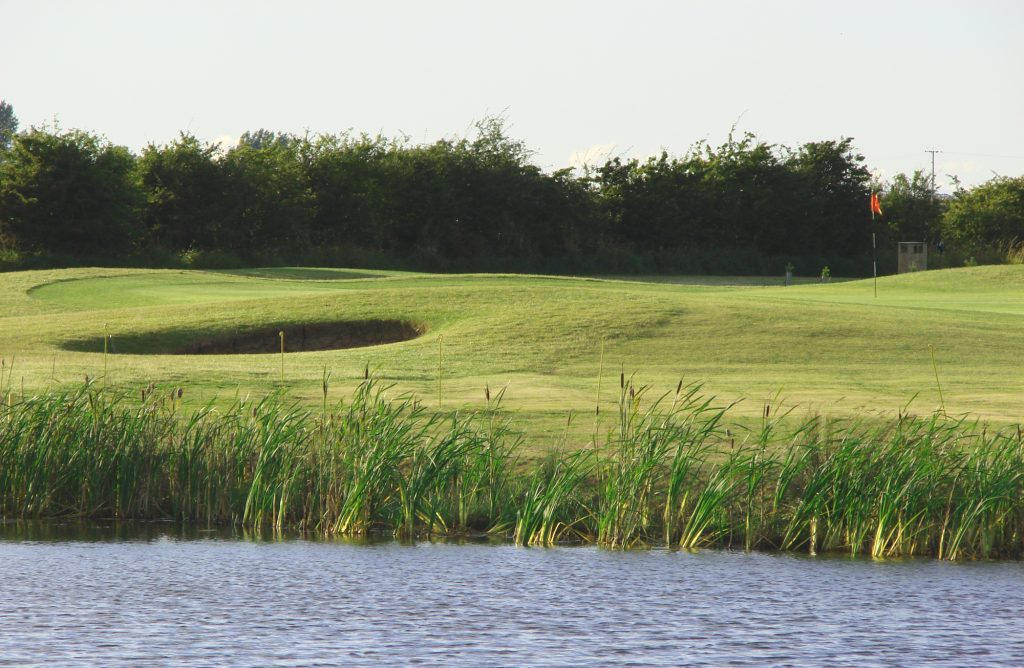With nearly three thousand golf courses in the UK, it’s important that they are constantly evolving and improving. One way a golf course can improve their overall experience is by working with a qualified and experienced golf course architect who is a member of the European Institute of Golf Course Architects (EIGCA). These professionals specialise in optimising golf course facilities and experiences.
A Golf Course Architect is mainly responsible for the topography, landscape and golf course design. Beyond that, they craft creative practice facilities and evaluate any ongoing construction work.
At Booth Golf & Leisure we work closely with golf course architects. With this in mind, we sought the insight from an experienced architect and enlisted the expertise of Jonathan Gaunt from Gaunt Golf Design. He shared his key considerations that guide his approach when designing golf facilities.
1. Enhancing Golf Courses
Our initial focus revolves around identifying opportunities for improvement on the golf course. While our role extends beyond the creation of entirely new golf courses or the redevelopment of existing ones, our primary objective is to optimise and enhance the clients available space.
Conducting a comprehensive on-course assessment is crucial in developing a nuanced understanding of the existing landscape and pinpointing key areas that warrant attention. This process not only assists us in gauging the specific needs of the client but also contributes to a holistic grasp of the project requirements.
Ultimately, the outcome of these enhancements translates into an elevated playing experience for all golfers, potentially resulting in increased revenue for the club
2. Practice Facilities
In an era where shorter forms of the game are gaining immense popularity, the presence of on-site practice facilities is pivotal for a golf course.
Recognising that not every golfer can commit to four or five hours on playing an entire 18-hole round, helps us to understand the need for versatile options that cater to a range of preferences. Whether that’s a beginner or a seasoned professional, providing opportunity for playing durations is becoming paramount.
There are a range of facilities, including meticulously designed putting greens, well-equipped practice bunkers, state-of-the-art driving ranges, and specialised academy courses, ensure that players can engage in golf more manageable and time-efficient bursts. This flexibility aligns with the diverse needs of our golfing community, fostering a dynamic and inclusive environment on the course.
3. Minimal Disruption
Recognising that a golf course is a business, it’s crucial to minimise downtime that could potentially impact the course’s income. The closure of holes not only diminishes the overall value of the course but also results in reduced number of players, striking a balance between necessary enhancements and operational continuity is paramount, and this is particularly dependant on the scale of the proposed changes.
Successfully keeping a golf club fully operational during the creation of new facilities represents a significant achievement, one that members genuinely appreciate. It not only underscores our commitment to seamless integration but also ensures that the business continues to thrive, fostering satisfaction among the golfing community.
4. Addressing Drainage Challenges
Integral to any comprehensive plan is the identification and resolution of environmental challenges, with a prevalent concern being ineffective drainage that afflicts many golf courses.
During the design phases of a project, strategic measures can be implemented to reprofile the topography, offering effective solutions for surface water management and mitigating flooding issues.
The successful resolution of on-site drainage challenges not only ensures an improved playing experience for golfers but also contributes to the overall efficiency of maintenance teams. By proactively addressing drainage concerns, we create an environment that harmonises with both recreational and operational aspects of the golf course.
5. Embracing Sustainability
In today’s global landscape, sustainability and environmental stewardship take centre stage. In the design phases, we prioritise the integration of opportunities that align with sustainable solutions.
Recognising the significance of water conservation for golf clubs, innovative measures are employed. This includes the implementation of sustainable drainage systems (rainwater harvesting), such as attenuation ponds, where drained water is stored and reserved for future use in the golf course irrigation system.
Furthermore, the approach extends to the careful quantification of soil requirements for the final design. Collaborating with industry specialists, golf courses can adopt environmentally responsible practice by recycling soils sourced from construction developments. This not only minimises waste sent to landfill sites but also provides a viable building material for Golf Course Developments, embodying our commitment to responsible and sustainable design practices.

6. Exploring Additional Possibilities
Beyond the course itself, there are opportunities to enhance elements that resonate with the broader local community. Introducing features like acoustic bunds in areas with proximity to traffic not only mitigates noise pollution on the course but also serves as a robust health and safety barrier, surpassing the efficacy of tree planting alone.
Furthermore, we strive to create positive environmental impacts by identifying spaces for new planting, establishing a wider range of habitats, and fostering wildlife corridors. It is essential to meticulously plan and achieve biodiversity net gain targets for every project. This commitment underscores our dedication to environmental responsibility, ensuring that we positively contribute to both the golf course and the surrounding ecosystem.